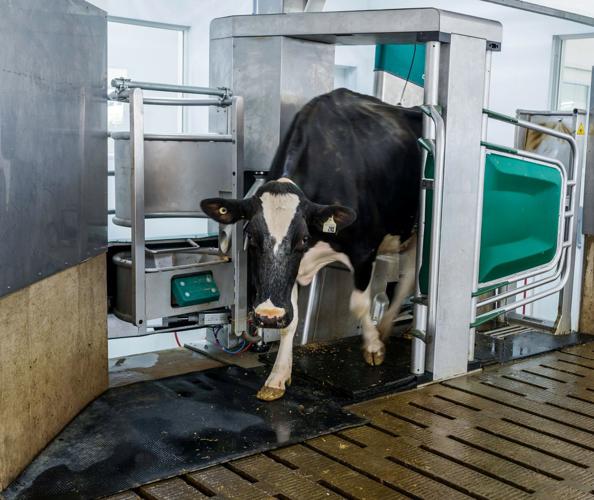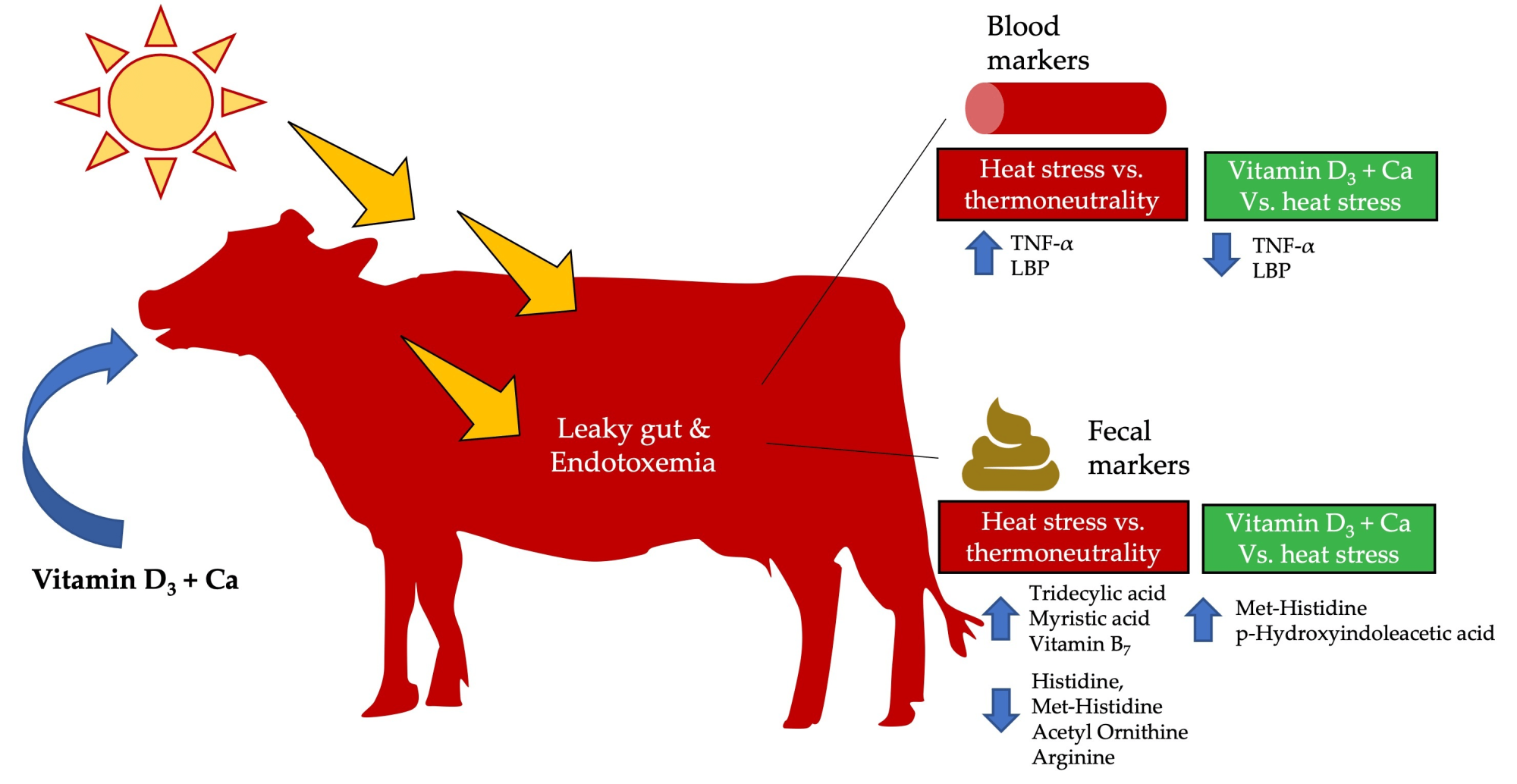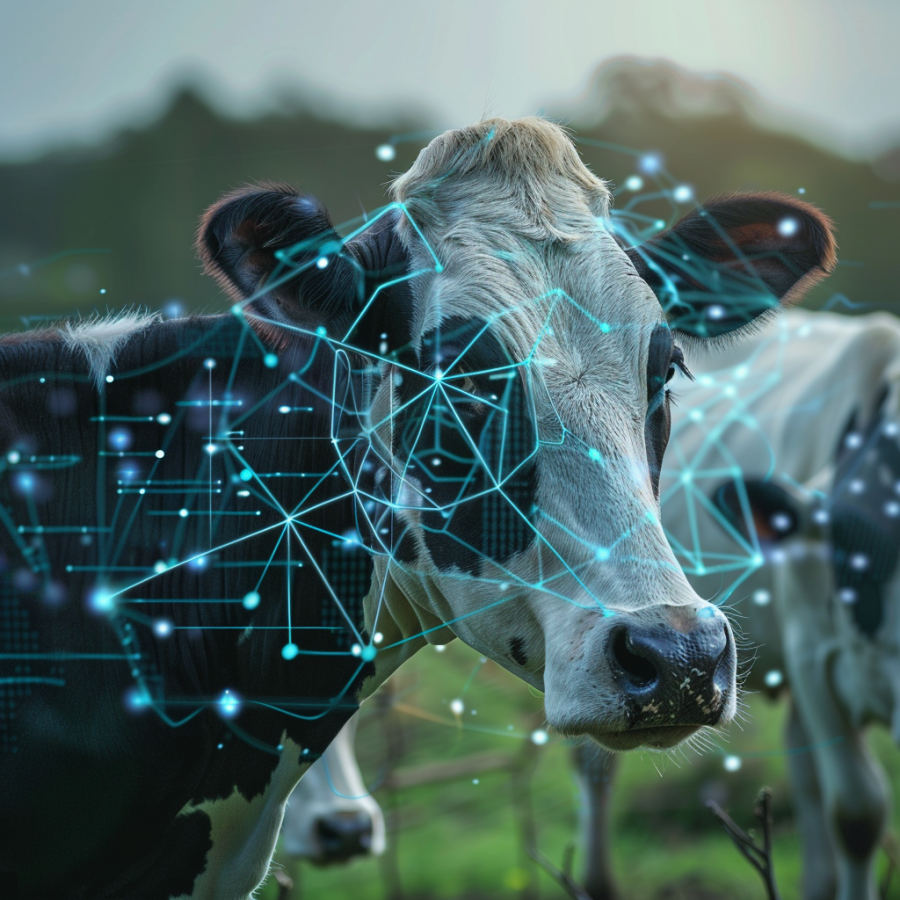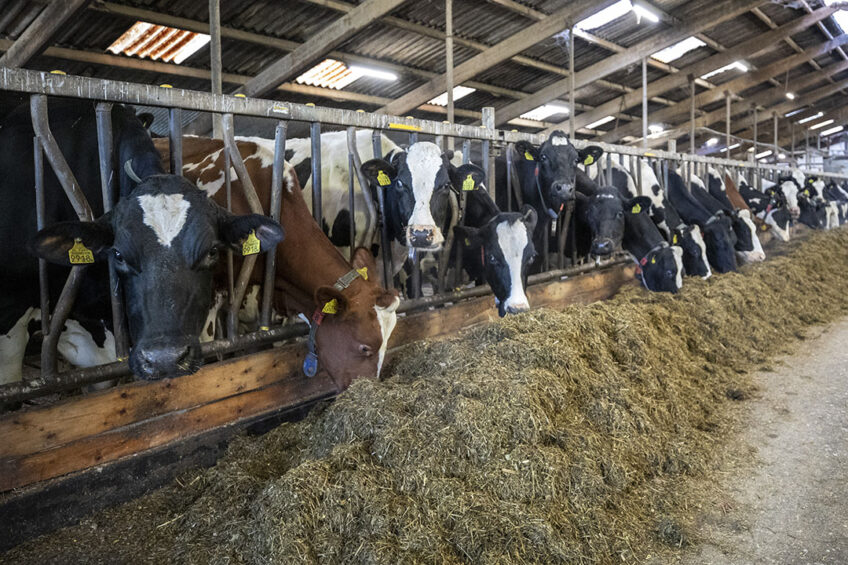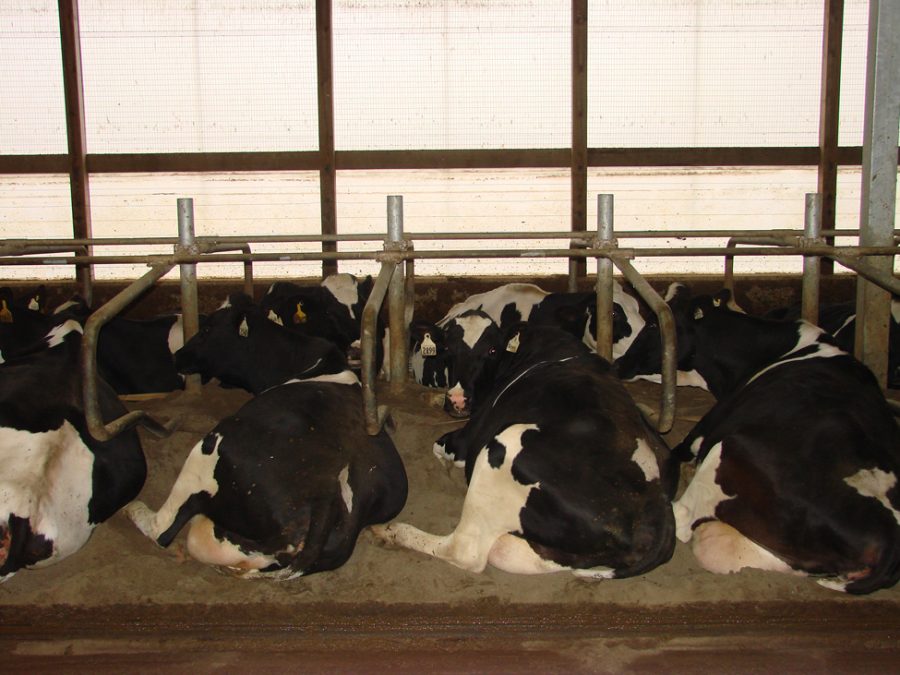Learn how keeping air speeds steady can cut heat stress in dairy cows. Looking to enhance cow comfort and productivity? Check out our expert tips now.
Summary: To combat the adverse effects of heat stress in dairy cows, maintaining consistent air speeds of at least 1 m/s at resting height is crucial. Research shows that stable airflow reduces variability in cow lying times, enhancing overall cow comfort and well-being. Practical steps like calibrating fans, adjusting angles, and ensuring uniform airflow across all stalls can make a significant difference. The findings underscore that consistent, high air speeds are essential for effective heat abatement and sustaining cow comfort during hot days, thereby improving cow welfare, productivity, and farm efficiency. Rising temperatures lead to reduced feed consumption, milk production, and lower reproductive rates, costing the US dairy sector up to $1.5 billion annually.
- Maintaining air speeds of at least 1 m/s at cow resting height is crucial for combating heat stress.
- Stable airflow significantly reduces variability in cow lying times, enhancing overall cow comfort and well-being.
- Calibrating fans, adjusting fan angles, and ensuring uniform airflow across all stalls can improve heat abatement.
- Consistent, high air speeds are essential for effective heat abatement and sustaining cow comfort during hot days.
- Rising temperatures decrease feed consumption, milk production, and reproductive rates, costing the US dairy sector up to $1.5 billion annually.
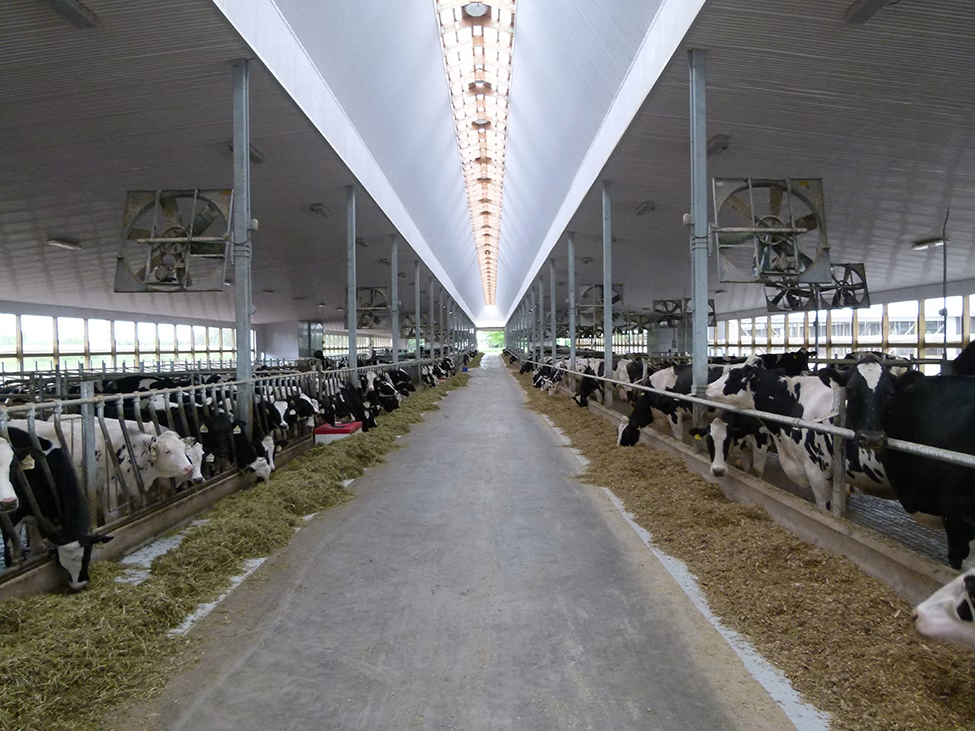
Imagine strolling into your barn on a hot summer day and seeing your cows, the backbone of your dairy enterprise, obviously unhappy; it’s not only about suffering but also about productivity, health, and profitability. Heat stress is a big challenge for dairy producers, impacting everything from cow health to milk output. Rising temperatures cause cows to consume less feed, produce less milk, and have lower reproductive rates. Heat stress costs the US dairy sector $897 million to $1.5 billion annually. Farmers risk losing output and increasing expenses without effective heat abatement techniques, placing enormous strain on their operations. So, how can you keep your cows happy and your farm profitable?
Beat the Heat: Understanding and Combating Heat Stress in Dairy Cows
Heat stress occurs when cows cannot remove enough heat to maintain their average body temperature. This may happen in hot weather, especially when high temperatures mix with high humidity levels, making it difficult for cows to cool off properly.
The effects of heat stress on dairy cows are diverse and deleterious. Cows’ bodies respond significantly to heat stress. One of the most immediate consequences is a reduction in feed consumption. Cows restrict their feed intake to lessen the metabolic heat generated during digestion. Reduced feed intake decreases milk supply as the cow’s body prioritizes maintenance over production.
Cows react to heat stress by standing longer. During colder weather, cows often alternate between standing and laying down, with a preference for resting to rest and contemplate. Conversely, cows stand for longer lengths of time and more often under heat stress. This behavioral modification allows cows to shed heat more effectively because standing increases the surface area of their bodies exposed to air, improving heat dissipation via convection. Increased standing also increases the risk of foot and limb issues, which may eventually lead to lameness.
Heat stress harms dairy cows by lowering feed intake and milk output, drastically affecting their everyday habits. These changes highlight the need for appropriate heat abatement measures in dairy production to keep cows comfortable and productive.
The Cooling Power of Consistent Airflow: Why Every Breeze Matters
When we speak about air speed in dairy barns, we mean air circulation in the stalls where cows rest. Airflow in barns helps cool the cows, much like a breeze does on a hot day.
Consistent air velocity is critical for reducing heat stress. Cows benefit from a consistent flow of air, which helps to lower their body temperatures. This cooling impact also helps individuals lay down more easily and for extended periods, benefiting their health and productivity.
Consider this: when air travels over the cows, it removes the accumulated heat on their bodies. This procedure is comparable to how a fan cools you by removing heated air from your skin. The goal is to ensure that the airflow is uniform throughout the stalls so that every cow benefits equally.
Unearthing Key Insights: The Crucial Role of Consistent Airflow in Wisconsin Dairy Farms
The research found that consistent stall air speeds in commercial dairy farms are associated with less variability in cow lying times, and it was found that cow laying periods had decreased fluctuation. Wisconsin Dairy Farms discovered numerous significant results on ventilation and its effects on cow behavior. The study found that cross-ventilated barns had more incredible average air velocity at cow resting height than naturally ventilated barns—2.0 m/s against 1.4 m/s, respectively. Despite this, roughly 38% of stalls in natively ventilated barns had airspeeds less than the required one m/s, vs 16% in cross-ventilated barns.
Cows in barns with faster airflow had fewer but longer laying episodes, suggesting improved comfort and heat stress management. For every one m/s increase in velocity, cows had 0.8 fewer laying episodes per day. Furthermore, when the variation in air velocity between stalls grew, so did the variation in cows’ laying periods.
A considerable increase in the temperature-humidity index (THI) resulted in a 0.4°C elevation in vaginal temperature and more frequent daily laying spells. However, the research found no clear association between average air speed and vaginal temperature, indicating that both kinds of ventilation systems may be improved to better control heat stress.
The results emphasize the need to maintain regular and adequate air velocity across all stalls to increase cow comfort and stability during resting behaviors.
Practical Steps for Optimizing Air Speeds in Your Barn
Inconsistent airflow can significantly impact cow comfort and productivity, especially during heat stress. Here are some actionable tips to help you improve air speeds in your barns and ensure a more consistent and comfortable environment for your cows:
Calibrate Your Fans
- Regular Maintenance: Schedule routine maintenance checks to ensure fans function correctly and at their total capacity. Dust and debris can reduce their efficiency.
- Speed Settings: Ensure fans provide a minimum air speed of 1 m/s at cow resting height (0.5 m above the bedding surface). Use anemometers to measure the current air speeds and adjust accordingly.
- Fan Placement: Position fans strategically to ensure they cover the entire resting area uniformly. Overlapping airflows can help avoid dead zones where air speeds might drop below the required level.
Adjust Fan Angles
- Optimal Angling: Angle fans downward toward the resting area to maximize airflow at the cow’s resting height. This helps direct the breeze where the cows lie down, enhancing their comfort.
- Test and Recheck: After adjusting the angles, measure the air speed again with an anemometer to ensure adequate adjustments. Fine-tuning might be necessary to achieve uniform coverage.
Ensure Consistent Air Flow Across All Stalls
- Fan Distribution: Place fans evenly throughout the barn, ensuring no section receives inadequate airflow. If the coverage. If it is insufficient, consider adding.
- Check for Obstructions: Regularly inspect the barn for any barriers that might obstruct airflow, such as machinery, feed barriers, or structural elements.
- Use Ventilation Maps: Create and utilize a barn ventilation map to identify and rectify areas with suboptimal airspeed. Consistency is vital, as variability in air speeds can lead to stress and discomfort among the herd.
Maintaining air velocity of at least one meter per second at cow resting height may considerably increase cow comfort and minimize heat stress. These practical actions will improve animal welfare, production, and farm efficiency.
Frequently Asked Questions About Consistent Stall Air Speeds
Q: What are the benefits of maintaining consistent stall airspeeds?
A: Consistent air velocity of at least one meter per second may considerably increase cow comfort by lowering heat stress. This constancy aids in maintaining an ideal body temperature, resulting in improved resting behavior, less stress, and increased productivity and welfare.
Q: How do I measure the air speed in my barn?
A: To assess the airflow in your barn, use an anemometer, which detects wind speed. To guarantee thorough coverage, measure speeds at the cow’s standing height (1.5 m) and resting height (0.5 m).
Q: Isn’t installing additional fans or improving ventilation systems expensive?
A: While there are some upfront expenditures, the long-term benefits—such as greater milk output, enhanced cow health, and lower heat stress-related costs—can exceed the initial investment. Think about the possible economic effects and the well-being of your cows.
Q: What if my barn has areas with inconsistent airspeeds?
A: Determine which zones have low air velocity and alter your ventilation system appropriately. This might include recalibrating fans, installing new ones, or relocating existing ones to achieve more level airflow dispersion.
Q: How frequently should I check and maintain my fans to ensure consistent airspeed?
A: Regular maintenance is crucial. Check your fans periodically for indications of wear and tear. Clean them to minimize dust and debris accumulation, which may impair performance, and make sure they are correctly calibrated.
Q: Can I use natural ventilation alone to achieve consistent airflow?
A: Natural ventilation may be enough; however, it fluctuates depending on the weather. Mechanical solutions, such as fans, may offer a dependable and adjustable way of maintaining regular air speeds, particularly during the hotter months.
Q: What are some signs that my cows are experiencing heat stress despite having fans?
A: Look for behavioral cues such as increased standing time, decreased reclining time, more excellent respiratory rates, and lower feed intake. Monitoring vaginal temperatures and utilizing data recorders may also aid in diagnosing heat stress early.
Q: How do I balance the cooling needs with energy efficiency?
A: Use energy-efficient fans and automated systems that alter speeds depending on environmental temperature and humidity. This guarantees continuous airflow while maximizing energy efficiency.
Q: Is there any expert assistance available to implement these changes?
A: Indeed, many colleges, veterinary institutions, and agricultural extension programs provide materials and professional advice. For example, the Dairyland Initiative offers farmers training and tools to improve their barn ventilation systems.
Explore Expert Resources to Enhance Dairy Farm Ventilation
- Journal of Dairy Science – Access in-depth research papers on dairy cattle and ventilation systems.
- University of Florida IFAS Extension: Heat Stress Technical Notes – Detailed guidelines on assessing and managing heat stress in dairy cattle.
- USDA ARS Animal Agriculture and Climate Change – Provides insights and resources on adapting dairy farming practices for climate resilience.
- Bioenvironmental and Structural Systems (BESS) Lab – Independent testing and performance data for ventilation equipment used in livestock facilities.
- University of Wisconsin Veterinary School: Ventilation Resources – Guides on evaluating and improving ventilation systems in dairy barns.
- The Dairyland Initiative – Information and tools for creating optimal cow environments for dairy farms.
The Bottom Line
As we have seen, stable air speeds in dairy barns are critical for reducing heat stress and improving cow comfort. Our research from Wisconsin dairy farms emphasizes the need to have balanced airflow throughout all stalls since even tiny differences may substantially impact cows’ resting behavior. Installing fans isn’t enough to effectively reduce heat; you must also calibrate them appropriately, alter their angles, and ensure consistent air dispersion. These straightforward procedures may significantly improve the health and production of your herd.
Given the importance of ventilation in dairy farming, are you prepared to examine and improve your barn’s airflow so your cows can rest comfortably and battle the heat? Implementing these modifications enhances animal welfare and increases overall farm output. Please don’t wait for the next heat wave; make these changes to give your cows the comfort they deserve.
Learn more:
- Cool and Calm: Essential Tips for Handling Dairy Cattle in Hot Weather
- The Crucial Role of Cooling Dry Cows to Combat Heat Stress: Maximizing Dairy Profits
- Recognizing and Preventing Heat Stress in Dairy Cattle: Proactive Measures for Hot Seasons
 Join the Revolution!
Join the Revolution!
Bullvine Daily is your essential e-zine for staying ahead in the dairy industry. With over 30,000 subscribers, we bring you the week’s top news, helping you manage tasks efficiently. Stay informed about milk production, tech adoption, and more, so you can concentrate on your dairy operations.







 Join the Revolution!
Join the Revolution!
